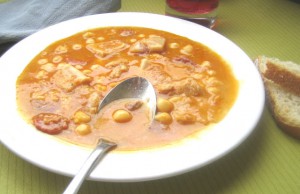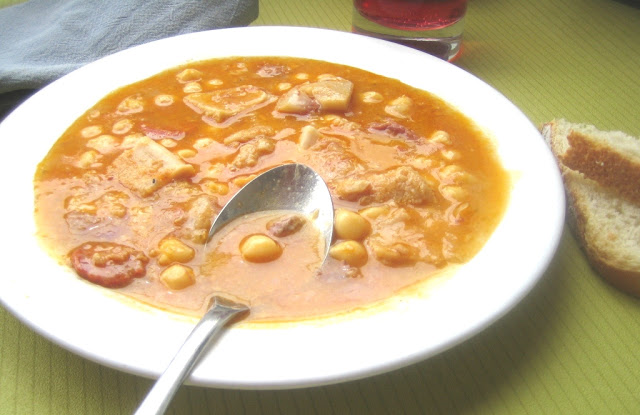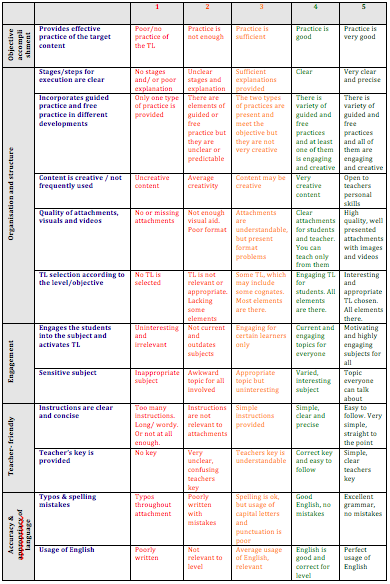Food. I love it. We have to eat it to survive but more importantly it defines who we are, where we are from and represents countries and cultures. ESL conversations require both students and teachers sharing experiences and in my opinion there is no better topic than food. Consider this: Spain has more restaurants, bars and cafeterias than all of Europe put together. In my 2 years living in Barcelona I have discovered so many amazing things to eat and my students continue to make new suggestions and recommendations. Opinions vary but are always passionate; the best jamon is found in this restaurant, try cava in this village, never go to McDonalds...
So today´s blog post is about sharing a few of my food experiences with you. Hopefully it will get you thinking about how to share similar experiences with your students, maybe it will make you hungry too.
 Pa Amb Tomaquet
Pa Amb Tomaquet - Literally “bread with tomato” but this peasant dish has been elevated by Catalans to an artform. The bread is lightly toasted, then a fresh tomato is rubbed on it (NEVER use a premixture - this is considered sacrilege), followed by some salt and olive oil. It is an accompaniment to every meal and varies in every restaurant, typifying basic Catalan cuisine.
 Calçots
Calçots - This about both experience and food. The calçot itself is a large spring onion which is in season from February for a few months. So far, so uneventful right? This humble vegetable is the centrepiece of the calçotada; an outdoor meal celebrating their harvest where they are grilled over a fire, then served wrapped in newspaper. This is about getting messy and having fun; you peel the outer layer with your hands, dunk the calçot in romesco sauce and finally devour whole, normally with your head tilted back.
 Cap I Pota- True story: a student kept telling me to visit a local restaurant (La Cova Fumada - literally another story in itself) and try their famous cap i pota. The dish is basically a stew made with cow´s head and foot but the student thought better to tell me exactly what it was made from until the next class. For me this is a perfect experience to share for adventurous food stories and also to reinforce the notion that you should try everything at least once as it was delicious.
Cap I Pota- True story: a student kept telling me to visit a local restaurant (La Cova Fumada - literally another story in itself) and try their famous cap i pota. The dish is basically a stew made with cow´s head and foot but the student thought better to tell me exactly what it was made from until the next class. For me this is a perfect experience to share for adventurous food stories and also to reinforce the notion that you should try everything at least once as it was delicious.
So these are just 3 of countless examples I could have written about. The key is to remember that in an ESL class it´s not just sharing experiences that are relevant or funny - it's also the passion, humour, emphasis and opinion that your students express and develop when sharing them.

 Pa Amb Tomaquet - Literally “bread with tomato” but this peasant dish has been elevated by Catalans to an artform. The bread is lightly toasted, then a fresh tomato is rubbed on it (NEVER use a premixture - this is considered sacrilege), followed by some salt and olive oil. It is an accompaniment to every meal and varies in every restaurant, typifying basic Catalan cuisine.
Pa Amb Tomaquet - Literally “bread with tomato” but this peasant dish has been elevated by Catalans to an artform. The bread is lightly toasted, then a fresh tomato is rubbed on it (NEVER use a premixture - this is considered sacrilege), followed by some salt and olive oil. It is an accompaniment to every meal and varies in every restaurant, typifying basic Catalan cuisine.
 Cap I Pota- True story: a student kept telling me to visit a local restaurant (La Cova Fumada - literally another story in itself) and try their famous cap i pota. The dish is basically a stew made with cow´s head and foot but the student thought better to tell me exactly what it was made from until the next class. For me this is a perfect experience to share for adventurous food stories and also to reinforce the notion that you should try everything at least once as it was delicious.
Cap I Pota- True story: a student kept telling me to visit a local restaurant (La Cova Fumada - literally another story in itself) and try their famous cap i pota. The dish is basically a stew made with cow´s head and foot but the student thought better to tell me exactly what it was made from until the next class. For me this is a perfect experience to share for adventurous food stories and also to reinforce the notion that you should try everything at least once as it was delicious.


